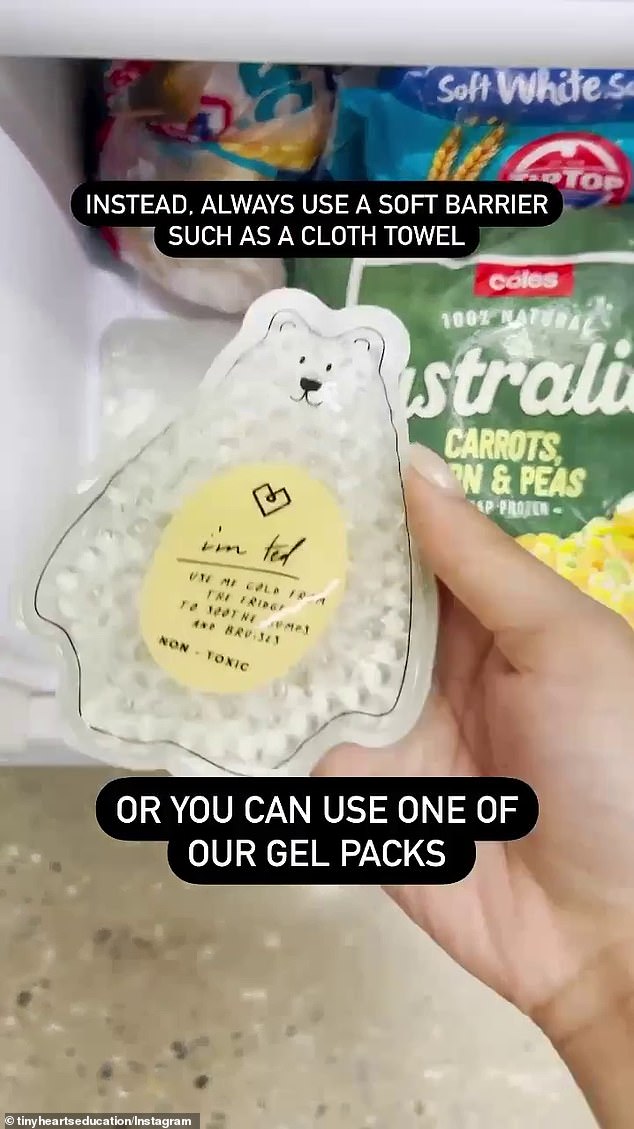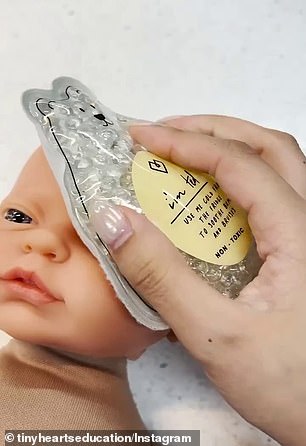Tiny Hearts Education founder reveals why you should never ice bumps, bruises and burns on babies
>
Paramedic: Why you should never use bags of frozen peas or vegetables to treat bumps, bruises or burns on young children
- A former paramedic warned parents not to use frozen peas to treat bumps
- Nikki Jurcutz said that bags of frozen vegetables can damage the tissue of babies
- The mother of two said that items in the freezer can go as low as 0C and cause frostbite
- He recommended covering frozen items with a towel or using a soft gel pack.
A former paramedic has warned parents why putting a bag of frozen peas or vegetables directly on the skin of babies and young children to soothe a bump, bruise or burn is a bad idea.
Nikki Jurcutz, founder of Tiny Hearts Education, said frozen items can cause damage and even frostbite to ‘delicate’ skin in a video posted on Instagram.
The mother-of-two, instead, always recommended covering frozen items with a kitchen towel to create a barrier or using a gel pack with a smooth exterior that won’t get too cold.
scroll down for video


Nikki Jurcutz (left), a mother of two and a former paramedic, has warned parents against using bags of peas or frozen vegetables to treat bumps, bruises and burns on babies.

The mother-of-two, instead, always recommended covering frozen items with a kitchen towel to create a barrier or using a gel pack with a smooth exterior that won’t get too cold.
‘WAIT! Before you reach for the package of frozen peas and corn, make sure you don’t get anything icy on delicate skin!’ she captioned the clip.
She said frozen items are generally below freezing and can cause damage to fragile tissue, sometimes even leading to frostbite if kept on the skin for too long.
“Instead, always use a soft barrier like a washcloth or towel,” Nikki advised, adding that parents can also purchase gel packs with a smooth exterior that won’t get too cold and can be held directly to the skin.


Frozen items can drop down to freezing and cause damage to fragile tissue if held on the skin for too long. Nikki recommended a gel pack with a smooth exterior that doesn’t get too cold.
The video received more than 262,000 views and dozens of comments from grateful parents, one of whom said his own son had suffered burns from an injury being treated with ice.
‘When my son came into SVT at eight weeks old, they (ED) put ice directly on his face, he had burns for weeks. (Besides, he didn’t even reverse)’, he said.
Others shared their own tips with many saying they store gel packs in the fridge instead of the freezer so they don’t get too cold.
“In first aid, we were taught to never put a frozen ice pack (straight from the freezer) on the forehead or head and only a cold, wet compress,” another onlooker recommended.
